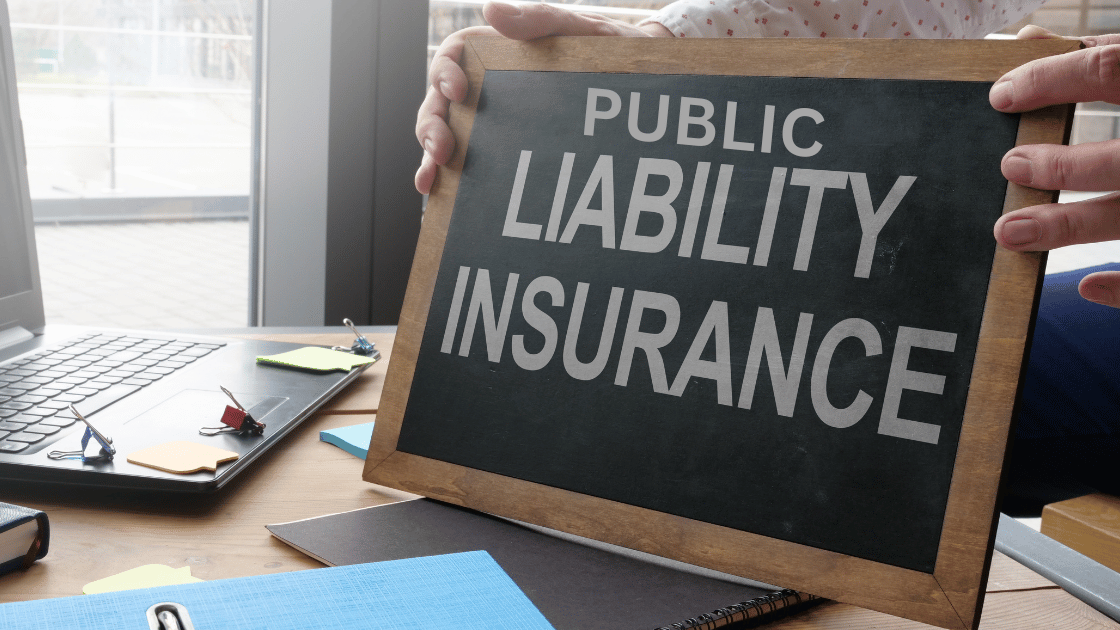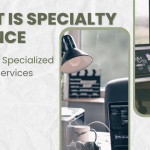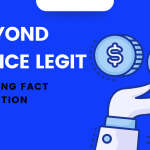Introduction
Public Liability Insurance: In the dynamic world of business, safeguarding your enterprise from unexpected challenges is paramount. One such challenge that can significantly impact your bottom line is facing liability claims. This is where Public Liability Insurance steps in as a shield for your business. In this comprehensive guide, we’ll delve into the intricacies of Public Liability Insurance, understanding its benefits, who needs it, factors affecting coverage, and much more.
Understanding Public Liability Insurance
Public Liability Insurance, often abbreviated as PLI, is a type of coverage designed to protect different types of businesses from claims filed by third parties who have suffered injury or some kind of property damage due to your business activities. These claims can stem from accidents, negligence, or any other mishap related to your business operations. E.g, if a customer slips and falls in your store, sustaining injuries, or if a product your business produces causes harm to a consumer, Public Liability Insurance would cover the associated legal expenses and potential settlements.
Key Benefits of Public Liability Insurance
- Financial Protection: The financial impact of liability claims can be substantial. Without insurance, your business might face immense financial strain. Public Liability Insurance covers legal costs, medical expenses, and potential settlements, offering the financial security you need.
- Legal Expenses: Legal proceedings can drain resources, both financial and emotional. PLI not only covers these expenses but also provides legal expertise to handle the intricacies of the legal process.
- Maintaining Reputation: Being involved in a liability claim can tarnish your business reputation. PLI not only covers the financial aspects but also helps in managing public relations, preserving your hard-earned goodwill.

Who Needs Public Liability Insurance?
Public Liability Insurance isn’t exclusive to a specific industry; it’s a crucial consideration for any business that interacts with the public, clients, or customers. Whether you’re a small retail store, a restaurant, a contractor, or even a self-employed professional, having this coverage can make a significant difference in your business’s survival during unforeseen events.
Factors Affecting Coverage and Premiums
Public Liability Insurance: Several factors impact the coverage you need and the premiums you’ll pay for Public Liability Insurance:
- Business Size: Larger businesses with higher footfall or greater potential for incidents might require higher coverage.
- Industry: High-risk industries, like construction, might need more coverage due to the increased likelihood of accidents.
- Location: Operating in an area prone to accidents or lawsuits might influence your coverage requirements.
- Risk Assessment: The thoroughness of your business’s risk assessment can determine the coverage needed.
To optimize your coverage and reduce premiums, consider implementing safety measures and risk management practices. Insurance providers appreciate businesses that proactively work to minimize potential claims.
How to Obtain Public Liability Insurance
Getting the right PLI for your business involves these steps:
- Assessment: Evaluate your business activities and potential risks. Determine the coverage limit you need.
- Research Providers: Compare different insurance providers, considering their reputation, customer reviews, and offered services.
- Customization: Work with the chosen provider to tailor the coverage to your business’s specific needs.
- Quote Comparison: Obtain quotes from multiple providers to ensure you’re getting the best deal.
- Policy Review: Carefully review the policy terms and conditions before finalizing. Understand what is covered and what is excluded.
Case Studies: Real-Life Examples
- Restaurant Slip-and-Fall Incident: A diner slips on a wet floor in a restaurant, resulting in injuries. The restaurant’s Public Liability Insurance covers the medical expenses and potential legal fees.
- Contractor Property Damage: A contractor accidentally damages a client’s property while working on a project. The client files a claim for repair costs. The contractor’s PLI takes care of the expenses.
- Retail Product Liability: A retailer faces a claim when a product they sell causes harm to a customer due to a manufacturing defect. The retailer’s PLI covers the legal costs and potential settlement.
Common Misconceptions about Public Liability Insurance
- It’s Expensive: The cost of PLI varies and can be plan according to your budget and needs. The expense of potential claims often outweighs the cost of insurance.
- Only for Large Businesses: PLI is relevant for businesses of all sizes, as accidents and mishaps can happen anywhere.
- Not Necessary: While not legally required in all cases, the financial protection and reputation management it provides make it highly advisable.
FAQ: Public Liability Insurance Explained
Q1: Is Public Liability Insurance legally mandatory? A1: It depends on your jurisdiction and industry. While some businesses might be required by law to have PLI, many consider it a smart business move to protect against liability claims.
Q2: How does PLI differ from other types of business insurance? A2: PLI specifically covers claims related to injuries or property damage suffered by third parties due to your business activities. Other types, like Professional Indemnity Insurance, focus on claims arising from professional advice or services.
Q3: Can PLI cover legal fees even if the claim is unfounded? A3: Yes, most PLI policies cover legal fees, even if the claim is baseless. This is crucial in protecting your business’s financial stability during legal proceedings.
Q4: Is there a maximum coverage limit for PLI? A4: Yes, there’s a maximum coverage limit that you can choose when setting up your policy. The limit should be determined based on your business’s potential exposure to claims.
Q5: How can I reduce my PLI premiums? A5: Implementing safety measures, maintaining a good claims history, and conducting thorough risk assessments can help reduce your premiums.
FAQ: Public Liability Insurance Explained (Continued)
Q6: What does Public Liability Insurance not cover? A6: While PLI covers a wide range of claims, it typically doesn’t cover intentional acts, employee injuries (covered by Workers’ Compensation), professional errors (covered by Professional Indemnity Insurance), and damage to your own property.
Q7: Are there any exclusions I should be aware of? A7: Yes, most PLI policies have exclusions, such as claims arising from illegal activities, contractual disputes, or deliberate acts. It’s important to thoroughly review your policy to understand these exclusions.
Q8: Can I get Public Liability Insurance online? A8: Yes, many insurance providers offer the option to purchase PLI online. However, it’s recommended to discuss your business’s specific needs with a representative to ensure you’re getting adequate coverage.
Q9: How long does it take to get coverage after applying? A9: The timeline varies depending on the insurance provider and the complexity of your business. Some policies can be issued within a day, while others might take a few days to a couple of weeks.
Q10: What should I do if a claim is filed against my business? A10: Contact your insurance provider immediately and provide all relevant details about the incident. They will guide you through the claims process, including providing necessary documentation and legal support.
Q11: Can I adjust my coverage limits later if my business expands? A11: Yes, you can usually adjust your coverage limits as your business grows. Just keep in mind that changing coverage might affect your premiums.
Q12: Is there a difference between PLI and General Liability Insurance? A12: The terms are often used interchangeably, but it’s important to clarify the coverage details with your insurance provider. Sometimes, General Liability Insurance might include broader coverage beyond just public liability.
Q13: Can PLI cover claims from previous years? A13: PLI typically covers claims that occur during the policy period. Claims from previous years would need to be addressed according to the coverage in place at that time.
Q14: Can PLI help protect my business’s online activities? A14: PLI usually covers physical interactions and operations. For online activities and cyber liability, you might need separate coverage like Cyber Liability Insurance.
Q15: How do I know if my business has enough coverage? A15: Adequate coverage depends on your business’s risk exposure. Consulting with insurance professionals can help you determine the right coverage limits based on your industry, business size, and activities.
Final Thoughts
Public Liability Insurance isn’t just a line item in your business’s budget; it’s a safety net that shields your enterprise from unexpected financial burdens. By understanding its nuances, benefits, and limitations, you’re taking a proactive step toward securing your business’s future. Remember, the unpredictable can happen to any business at any time, and being prepared with the right insurance coverage can make all the difference between survival and struggle.
As you continue on your journey as a business owner, keep in mind that risk management is an ongoing process. Regularly review your coverage, reassess your business’s risk exposure, and adapt your insurance as needed. This commitment to preparedness will ensure that your business remains resilient and well-protected in an ever-changing business landscape.
Conclusion
Public Liability Insurance stands as a crucial shield that businesses need to protect themselves from the unpredictable nature of liability claims. By understanding its benefits, assessing your business’s needs, and working with reputable insurance providers, you can ensure that your enterprise is well-prepared to face any unforeseen challenges that may come its way. Don’t underestimate the power of this coverage; it could be the difference between a minor setback and a significant setback for your business’s success.
In the ever-evolving landscape of business, being proactive about risk management is a sign of prudent leadership. Public Liability Insurance provides that safety net, allowing you to focus on growing your business without constantly worrying about potential liability claims. From financial protection to maintaining your reputation, this coverage offers comprehensive benefits that can make a substantial difference when the unexpected occurs.
As you embark on the journey of safeguarding your business through Public Liability Insurance, remember that knowledge is your strongest ally. By understanding the nuances of this insurance type, its benefits, and the steps to obtain it, you’re equipping yourself with the tools needed to help you make informed decisions that align with your business’s unique needs.
In the end, Public Liability Insurance isn’t just a line item on your financial statements; it’s an investment in your business’s stability, growth, and longevity. Whether you’re running a bustling retail store, a cozy café, or a cutting-edge tech startup, the potential for liability claims is always present. Being well prepared with the right insurance coverage could mean the difference between weathering the storm with confidence and struggling to recover from a financial blow.
So, as you navigate the complex world of business insurance, remember the concept at the heart of this guide: Public Liability Insurance is your shield, your safety net, and your partner in ensuring that your business thrives, even in the face of unforeseen challenges. Your business’s success story is waiting to be written, and with Public Liability Insurance, you can be confident that you’re writing it with resilience, prudence, and foresight.
Disclaimer: This article is for only informational purposes only and should not be considered legal in any way, financial, or insurance advice. Always consult with professionals in these areas to help you make informed decisions based on your specific circumstances and jurisdiction.
Thank you for reading.
Also read: Securing Your Team: The Essentials of Employment Insurance | 2023
Commercial Property Insurance Explained: Safeguarding Your Business | 2023
Commercial Insurance: Hauling Your Business Toward Success | 2023
Allstate Insurance Near Me: Finding Your Perfect Coverage 2023










